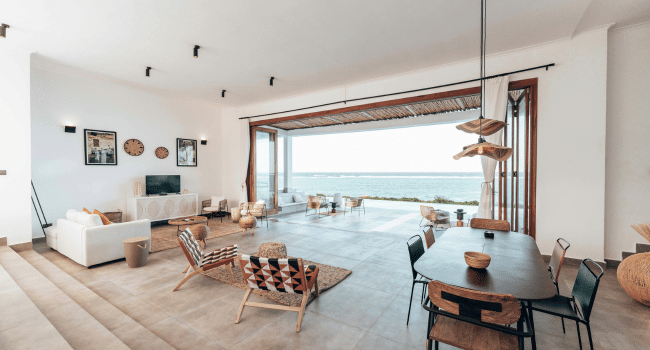Table of Contents
As the new year approaches, interior design continues to evolve beyond fleeting fads and towards mindful, meaningful choices that shape the way we live. The homes of 2025 are set to reflect a growing emphasis on comfort, sustainability, and individual expression. From earthy tones and tactile materials to cutting-edge flooring innovations, the year ahead promises a balance between natural warmth and modern sophistication.
Nature-Inspired Spaces Take the Lead
After years of minimalism dominating design trends, 2025 is seeing a revival of organic textures and colours. Homeowners are embracing spaces that feel grounded, with materials such as wood, stone, clay, and wool becoming focal points once again. The shift reflects a growing desire to reconnect with nature — not only through indoor plants and natural light, but also through the materials underfoot.
Carpets in soft, natural fibres are making a notable comeback. These aren’t the patterned wall-to-wall carpets of the past, but elegant, neutral-toned designs that create a sense of calm. For anyone searching for carpet fitted near me, it’s worth exploring trusted specialists who prioritise both craftsmanship and sustainability. The right carpet can anchor a room, adding warmth, acoustic comfort, and an inviting texture that complements natural surroundings.
Sustainable Design as Standard
Sustainability is no longer an optional feature — it’s now at the heart of interior design. Consumers are increasingly seeking products that are responsibly sourced, ethically produced, and built to last. This trend extends from furniture made with reclaimed wood to flooring made with recycled or renewable materials.
Many homeowners are becoming more conscious of the environmental footprint of their choices. Wool carpets, for example, are biodegradable and renewable, making them a popular choice among those who value both style and sustainability. Meanwhile, advances in eco-friendly manufacturing processes are helping reduce waste and emissions across the flooring industry.
Interior designers are also rethinking how spaces function over time. Rather than frequent renovations, the focus is on creating adaptable, timeless interiors that evolve with the homeowner’s needs. This mindset not only supports sustainability but also promotes a more personal and enduring connection to one’s living space.
Comfort-Driven Design
In 2025, the idea of home as a sanctuary continues to influence design decisions. Comfort-driven design is centred on creating environments that nurture well-being — both physically and emotionally. This means choosing furnishings and finishes that look beautiful but also feel good to live with.
Soft furnishings, ambient lighting, and layered textures are key components. Flooring, often overlooked in the comfort equation, plays an essential role. Carpets, rugs, and cork flooring provide underfoot warmth and sound insulation, transforming hard, echoing spaces into welcoming havens.
With more people working from home or spending greater time indoors, the demand for tactile, cosy interiors has never been stronger. A well-chosen carpet can enhance both comfort and concentration, making it a practical as well as aesthetic addition to living and working spaces alike.
Bold Colour Accents and Textural Layers
While neutral palettes remain popular, 2025 is also embracing bolder accents and unexpected contrasts. Deep terracotta, forest green, and burnt orange tones are being used to add depth and personality to otherwise muted interiors. These colours pair beautifully with natural textures like wool, linen, and oak, creating an earthy yet vibrant effect.
Layering textures is another defining trend. Designers are combining materials in creative ways — for example, pairing polished concrete with soft carpets or raw timber with woven textiles. This interplay of surfaces adds dimension and visual interest without overwhelming the senses. The result is an interior that feels rich, balanced, and effortlessly cohesive.
Smart Homes, Seamless Design
Technology continues to influence interior design, but 2025’s approach is more discreet than ever. Rather than dominating spaces, smart home technology is being subtly integrated into design schemes. Hidden charging ports, energy-efficient lighting systems, and climate-responsive flooring are all examples of innovation meeting aesthetics.
The flooring industry is also adopting smart solutions, with advancements in underfloor heating and improved installation techniques. Professional fitting remains essential to ensure both comfort and longevity. Homeowners looking to upgrade their flooring can benefit from consulting experienced specialists, particularly those offering high-quality carpets and bespoke fitting services.
The Personal Touch
Perhaps the most significant shift in interior design is the growing focus on individuality. The homes of 2025 are less about following trends and more about telling personal stories. This could mean displaying cherished collections, upcycling vintage furniture, or experimenting with colour in unconventional ways.
Rather than seeking perfection, designers and homeowners alike are embracing imperfection — celebrating the handmade, the reclaimed, and the unique. It’s an approach that values authenticity over uniformity and transforms a house into a true reflection of its occupants.
Looking Ahead
As 2025 unfolds, the key to great interior design lies in balance: between innovation and tradition, style and substance, individuality and harmony. Whether you’re planning a complete renovation or a simple refresh, focusing on sustainable materials, tactile finishes, and comfortable design will ensure your home remains timeless and inviting.
For those reimagining their space from the ground up, investing in high-quality flooring is one of the most transformative steps you can take. Whether it’s a sleek wood finish, a natural stone effect, or a beautifully fitted carpet, the foundation of great design often begins underfoot.
